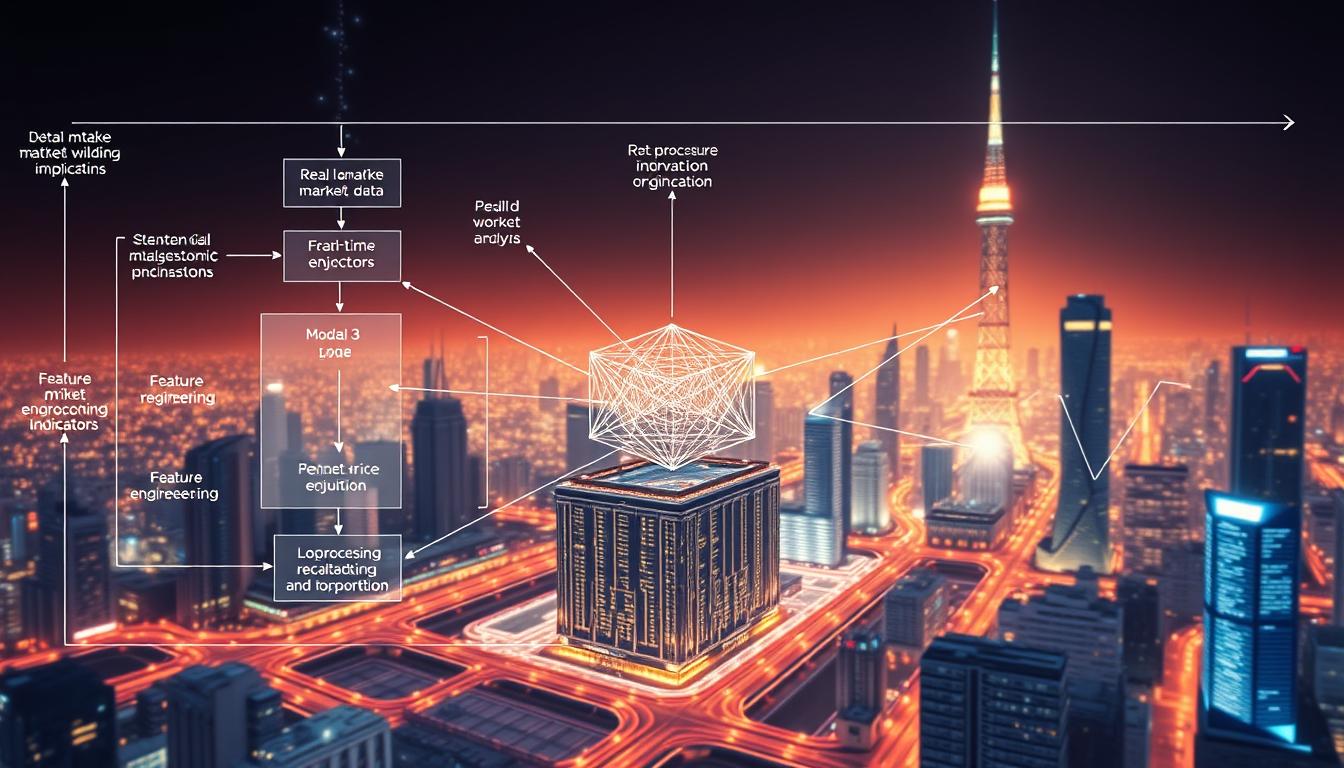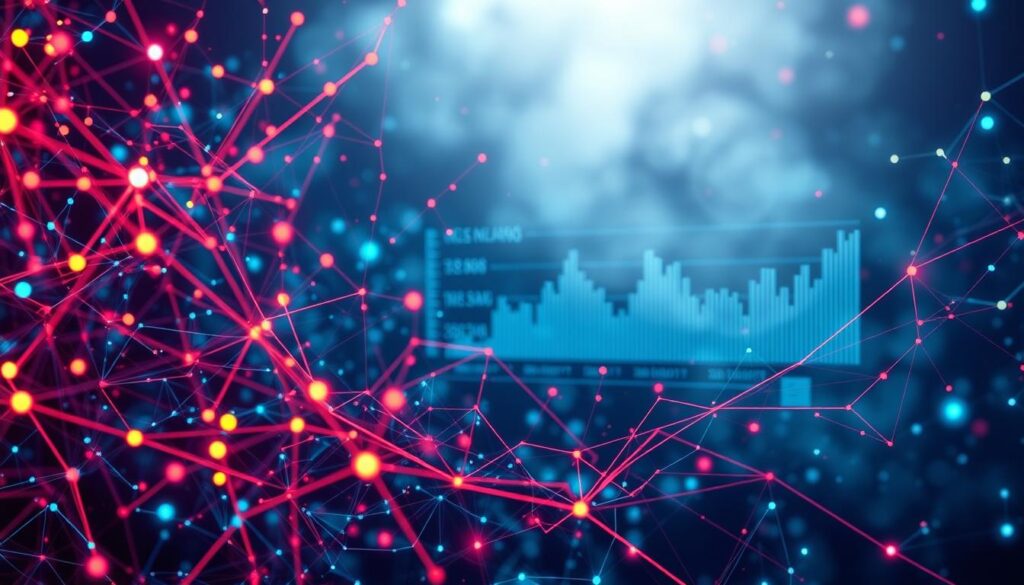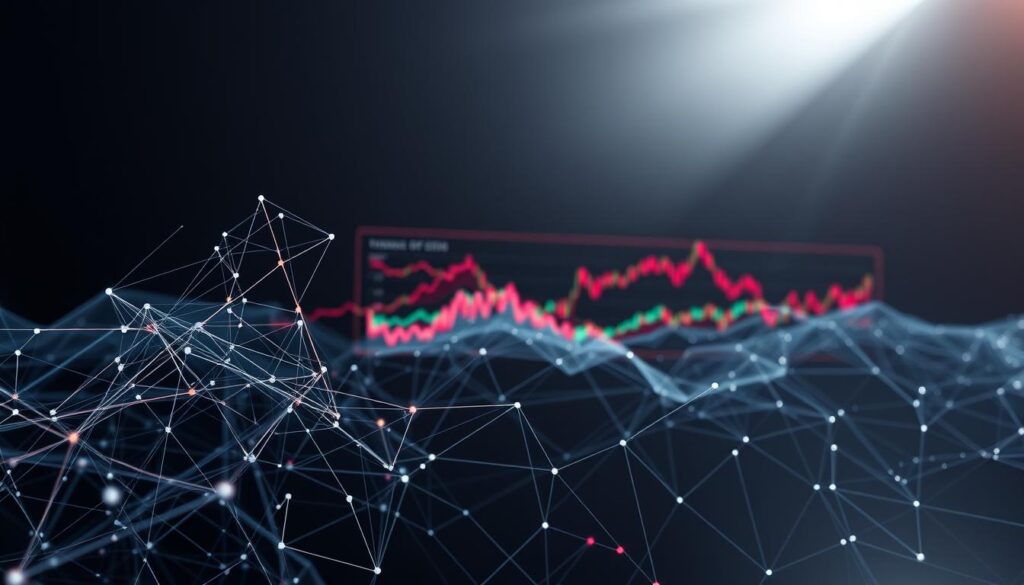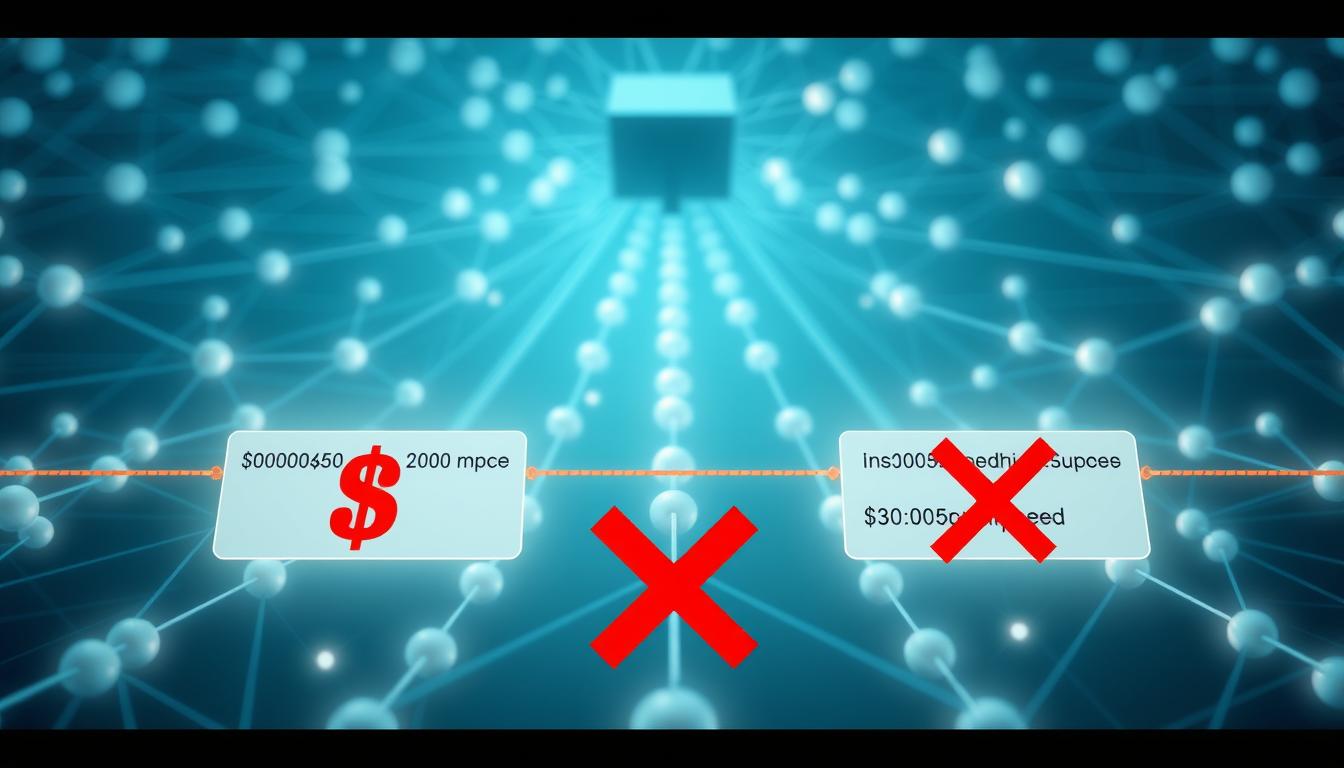Now Reading: Learn About AI Crypto Market Prediction Algorithms Explained
- 01
Learn About AI Crypto Market Prediction Algorithms Explained
Learn About AI Crypto Market Prediction Algorithms Explained

The digital finance world moves incredibly fast. Keeping up requires powerful tools. Advanced computational systems are now essential for modern traders.
These smart technologies analyze huge amounts of information. They spot patterns humans might miss. This leads to quicker and more informed decisions.
This guide explores how these systems work. We will look at the core technology behind them. Understanding these foundations is key to grasping their potential.
Many traders use automated tools to stay competitive. For a deeper look at these methods, consider this resource on predicting crypto market trends. It shows the practical application of these advanced systems.
We will also address a critical question. Does this technology offer a real edge? Or will everyone using it cancel out the advantages? This guide provides a balanced view of the possibilities and limits.
Key Takeaways
- Advanced technology is transforming how trading decisions are made.
- These systems process data at a speed and scale beyond human ability.
- The guide covers the technical basics, benefits, and realistic limitations.
- Content is designed for both new and experienced participants in digital finance.
- Practical applications, like the strategies discussed here, are a major focus.
- The goal is to educate on how these predictive tools function in real-world scenarios.
Introduction: The Rise of AI in Crypto Trading
Modern financial technology has revolutionized how digital assets are bought and sold. Sophisticated computational systems now play a central role in contemporary investment strategies. These advanced tools process information at incredible speeds.
The Role of AI in Modern Trading
Intelligent systems execute transactions much faster than human traders. They scan enormous datasets to identify profitable opportunities. This speed advantage allows for capturing brief price movements.
These analytical tools examine multiple data sources simultaneously. They study price fluctuations, trading volumes, and online sentiment. This comprehensive approach provides a deeper understanding of market dynamics.

Benefits of Machine Learning in Market Analysis
Machine learning continuously improves its predictive capabilities. The systems learn from new information and adapt their strategies. This leads to increasingly accurate forecasts over time.
One significant advantage is the elimination of emotional bias. These tools rely on statistical patterns rather than fear or greed. This data-driven approach creates more consistent results.
The technology operates around the clock without interruption. It monitors volatile conditions continuously, catching opportunities humans might miss. This constant vigilance provides a competitive edge in fast-moving markets.
Understanding AI Crypto Market Prediction Algorithms Explained
The foundation of modern trading strategies lies in understanding how advanced analytical tools process information. These systems transform complex data into practical insights for digital asset management.
Core Elements of AI Prediction Models
Intelligent forecasting systems rely on several key components. Machine learning forms the backbone of these analytical frameworks.
These models examine historical price movements and trading volumes. They identify recurring patterns that might indicate future price directions.
The technology processes thousands of data points simultaneously. This comprehensive approach reveals connections that traditional methods often miss.

Integrating Machine Learning and Data Analytics
Machine learning and data analytics work together seamlessly. The combination creates powerful forecasting capabilities.
Data analytics examines information from multiple sources. This includes price charts, social media sentiment, and blockchain transaction details.
Machine learning algorithms then process this analyzed information. They continuously refine their forecasting methods based on new data.
This integration allows for rapid strategy adjustments. The systems can respond quickly to changing market conditions.
Exploring Key AI Tools in Crypto Predictions
Sophisticated computational tools are at the heart of modern forecasting systems. These technologies transform raw information into actionable intelligence for traders.
They handle massive datasets to uncover hidden opportunities. This section explores two powerful categories of these analytical instruments.
Neural Networks and Their Impact
Neural networks are advanced computational models inspired by the human brain. They excel at finding complex, non-linear patterns within financial data.
Specific architectures are particularly effective for time-series analysis. Recurrent Neural Networks (RNNs), Long Short-Term Memory (LSTM) networks, and Gated Recurrent Units (GRUs) learn from sequential data.
This allows them to detect subtle shifts in price behavior over time. Their ability to understand temporal dependencies makes them highly accurate for forecasting.

Data Analytics for Real-Time Insights
Data analytics platforms process information continuously from multiple sources. They examine live trading volumes, social sentiment, and on-chain activity.
This real-time processing provides immediate insights into emerging trends. Traders use these tools to validate signals from other models.
The combination creates a comprehensive view of market conditions. It turns streaming data into a strategic advantage.
| Model Type | Primary Strength | Common Application |
|---|---|---|
| Recurrent Neural Network (RNN) | Processes sequential data | Basic pattern recognition in price history |
| Long Short-Term Memory (LSTM) | Remembers long-term dependencies | Identifying major trend shifts and cycles |
| Gated Recurrent Unit (GRU) | Computational efficiency | Faster analysis on high-frequency data |
Historical Evolution of Algorithmic Trading
Long before Bitcoin’s creation, financial innovators were developing systematic approaches to market analysis. The journey of computer-assisted investment strategies spans over five decades of continuous refinement.

From Traditional Markets to Cryptocurrencies
Ed Thorp’s pioneering work in the 1960s demonstrated how computers could identify arbitrage opportunities. This early automation laid the groundwork for future trading systems.
The 1970s introduced electronic stock quote systems that transformed market data access. By the 1980s, electronic communication networks connected major investors directly.
Cryptocurrency markets adopted these strategies in the early 2010s. Traders adapted existing approaches to handle digital assets’ unique characteristics.
Milestones in Algorithmic Strategies
Renaissance Technologies, founded in 1982, built sophisticated mathematical models for investment decisions. Their success showed the power of quantitative approaches.
The 1990s brought high-frequency trading with faster execution capabilities. These systems capitalized on brief price discrepancies across different exchanges.
Different market conditions throughout history shaped strategy development. The 24/7 nature of digital asset trading created new opportunities for automated systems.
Advanced Algorithmic Strategies in Cryptocurrency Trading
Sophisticated traders now employ a diverse set of automated approaches to navigate the dynamic landscape of digital assets. These methods are designed to capitalize on specific conditions, from fleeting price differences to long-term accumulation.
Understanding these systems provides a significant edge. They automate complex actions with speed and precision.
Arbitrage, Grid Trading, and Market Making
Arbitrage seeks to profit from small price gaps for an asset across different platforms. Automated tools scan exchanges simultaneously, identifying these brief opportunities.
They execute buy and sell orders in moments, securing a profit from the difference. This requires immense speed to be effective.
Grid trading establishes a network of orders above and below a current price. This creates a systematic way to profit from normal price swings within a range.
The system automatically buys on dips and sells on peaks. It is a powerful technique for sideways or volatile markets.
Market making involves providing liquidity by placing both buy and sell orders. The goal is to earn from the spread between the bid and ask prices.
These systems help stabilize prices while generating consistent, small gains. They continuously adjust orders based on real-time activity.
Automated Dollar-Cost Averaging
Dollar-cost averaging (DCA) is a long-term investment strategy. It involves investing a fixed amount of money at regular intervals, regardless of the asset’s price.
This approach smooths out the average purchase price over time. It reduces the risk of making a large investment at a price peak.
Automation makes this strategy effortless and disciplined. The system executes trades systematically, removing emotional decision-making.
| Strategy | Primary Goal | Best Market Condition |
|---|---|---|
| Arbitrage | Exploit price differences across exchanges | Inefficient markets with lagging price updates |
| Grid Trading | Profit from price volatility within a range | Sideways or oscillating markets |
| Market Making | Earn from the bid-ask spread | All conditions, by providing liquidity |
| Dollar-Cost Averaging | Reduce average cost over the long term | All conditions, for accumulation |
Risk Management and Ethical Considerations
Smart investment approaches combine profit-seeking strategies with protective measures that limit potential downsides. This balance is crucial when using automated systems for financial decisions.
Techniques for Minimizing Trading Risks
Stop-loss orders automatically sell assets when prices drop to predetermined levels. This tool caps losses and prevents emotional reactions during market volatility.
Position sizing determines appropriate trade amounts based on individual risk tolerance. It prevents overexposure to any single asset, balancing overall portfolio risk.
Diversification spreads investments across different assets and strategies. This approach reduces the impact of any single failed prediction.
Addressing Ethical Concerns in AI Trading
Market manipulation remains a significant ethical concern with automated systems. Practices like spoofing involve placing fake orders to influence prices.
Transparency requires clear insight into how systems make trading decisions. Investors should understand the logic and data behind automated strategies.
Accountability ties developers and users to system actions. Detailed logs help track decisions and ensure responsible use of technology.
AI-Driven Automation and Its Benefits
Continuous market surveillance through automated tools provides traders with a significant advantage in fast-moving digital economies. These systems transform how investment strategies are executed.
Streamlining Trading Decisions
Automated systems eliminate the need for manual research and chart analysis. They process vast amounts of information to identify optimal entry and exit points.
These tools execute predefined strategies with precision. They remove emotional factors from the decision-making process.
This approach ensures consistent application of trading rules. It maintains discipline during volatile conditions.
Enhanced Efficiency in 24/7 Market Monitoring
Digital markets operate continuously across global time zones. Automated monitoring never sleeps, capturing opportunities around the clock.
These systems scan multiple assets simultaneously. They detect emerging trends faster than human observation allows.
Real-time data processing enables immediate response to market movements. This constant vigilance maximizes profit potential.
| Aspect | Manual Approach | Automated System |
|---|---|---|
| Monitoring Time | Limited by human capacity | 24/7 continuous operation |
| Decision Speed | Minutes to hours | Milliseconds |
| Emotional Influence | High potential for bias | Completely eliminated |
| Multi-asset Coverage | Limited simultaneous focus | Unlimited parallel analysis |
| Strategy Consistency | Variable execution | Perfect adherence to rules |
The Pros of AI in Crypto Predictions
The strategic benefits of computational forecasting extend beyond simple automation to provide genuine analytical depth. These systems transform raw information into actionable intelligence for investors.
Data-Driven Decision Making
Intelligent systems eliminate emotional bias by relying on statistical evidence. They process enormous datasets to identify reliable patterns.
This approach delivers consistent results based on historical correlations. Investors gain valuable insights that support confident choices.
Early Detection of Market Trends
Sophisticated tools identify emerging market trends before they become widely recognized. They scan multiple data streams simultaneously.
These systems analyze social media sentiment and online discussions. This provides early warning signals about shifting public opinion.
| Analysis Aspect | Traditional Approach | Data-Driven Approach |
|---|---|---|
| Data Sources | Limited historical charts | Multiple real-time streams |
| Sentiment Analysis | Manual media review | Automated social media scanning |
| Trend Identification | Reactive recognition | Proactive detection |
| Decision Basis | Experience and intuition | Statistical patterns |
Evaluating the Cons and Limitations of AI in Crypto
While automated systems offer significant advantages, a clear-eyed view of their limitations is essential for responsible use. These powerful tools are not infallible and come with inherent risks that traders must acknowledge.
Understanding these constraints helps build more robust and realistic investment strategies.
Potential Biases and Overfitting Challenges
Forecasting models are only as reliable as the information they learn from. If historical data contains biases, the resulting predictions will reflect those flaws.
This can lead to systematically inaccurate forecasts for certain digital assets. The quality of input data directly shapes the output.
Another critical issue is overfitting. A model may become too specialized on past patterns. It performs well on historical data but fails when faced with new market conditions.
This lack of generalization is a major risk for static systems. Relying too heavily on technology without human oversight is another pitfall.
These systems should support, not replace, an investor’s judgment and knowledge of fundamental factors.
| Limitation Type | Core Problem | Potential Impact |
|---|---|---|
| Algorithmic Bias | Flawed or incomplete training data | Systematically inaccurate predictions |
| Overfitting | Model too tailored to past data | Poor performance in new market situations |
| Lack of Transparency | Unclear decision-making process | Difficulty trusting or validating results |
| Model Degradation | Static models not updated | Decreasing effectiveness over time |
Balancing AI Innovation with Human Expertise
Rather than choosing between automation and intuition, top performers integrate both approaches for superior results. The most successful investors understand that technology enhances rather than replaces human judgment.
This balanced approach leverages the strengths of each method. Computational systems provide data-driven insights while human experience adds contextual understanding.
Integrating Human Judgment with Machine Insights
Machine learning tools excel at processing vast amounts of information quickly. They identify patterns that might escape human observation. However, these systems operate within the constraints of their training data.
Human traders bring unique advantages to the table. They interpret news events and regulatory changes that algorithms may miss. This contextual intelligence is crucial for adapting to sudden shifts.
Experienced investors use computational analysis as one input among many. They combine statistical patterns with market knowledge and intuition. This creates more robust decision-making processes.
The future lies in synergistic relationships between people and technology. Each contributes distinct strengths that complement the other’s limitations.
Emerging Trends and the Future of AI in Crypto Trading
As technology advances, new possibilities emerge for analyzing financial opportunities. The landscape continues to evolve with remarkable speed.
Sophisticated systems process information faster than ever before. They adapt to changing circumstances with impressive flexibility.
Innovative Applications and Future Prospects
Real-time analysis represents a significant breakthrough. Systems now evaluate streaming data continuously.
This allows for immediate adjustments to forecasts. Traders can respond to shifting conditions without delay.
The democratization of analytical tools creates new opportunities. More people can access advanced capabilities previously reserved for institutions.
According to recent analysis on how intelligent systems reshape markets, accessibility continues to improve.
Adapting to Evolving Market Dynamics
Systems incorporate diverse data sources for comprehensive analysis. They examine on-chain activity alongside traditional indicators.
This multi-faceted approach provides deeper insights. It helps identify emerging patterns across different markets.
The technology learns from recent behavior to improve accuracy. Continuous adaptation ensures relevance in dynamic environments.
Conclusion
Successful participation in today’s financial ecosystem demands a balanced approach to technological innovation and human insight. Computational systems offer remarkable advantages in processing vast amounts of data and executing sophisticated strategies with precision.
The most effective traders recognize that these tools enhance rather than replace judgment. They combine statistical patterns with contextual understanding of market dynamics. This synergy creates more robust decision-making processes.
Ethical considerations remain paramount as technology evolves. Transparency and accountability ensure these powerful systems serve all participants fairly. The future lies in fostering innovation while maintaining standards that benefit the entire ecosystem.
Approach these advanced tools with informed optimism. They represent significant progress in analytical capabilities when used responsibly alongside human expertise.
FAQ
How do these systems use machine learning to forecast digital asset prices?
They analyze vast amounts of information, including historical price charts, trading volumes, and social media chatter. By identifying complex patterns in this data, the models can generate forecasts about potential price movements and market conditions.
What are the main benefits of using these automated tools for investors?
The primary advantages include emotion-free execution, the ability to process enormous datasets quickly, and 24/7 monitoring of the volatile blockchain space. This helps traders capitalize on opportunities and manage risks more effectively than manual methods.
What trading strategies can these intelligent models execute?
Common strategies include arbitrage, which exploits tiny price differences across exchanges, and grid trading, which automates buying low and selling high within a set range. These approaches are designed to profit from normal market swings.
Are there significant risks involved with relying on automated predictions?
Yes. Models can sometimes be “overfit” to past data, failing in new conditions. They may also amplify losses during extreme volatility or “black swan” events that they haven’t been trained on, highlighting the need for human oversight.
How important is human judgment when using these advanced tools?
A> It is crucial. While artificial intelligence provides powerful insights and handles repetitive tasks, experienced traders are essential for interpreting context, managing unforeseen events, and setting strategic goals that guide the technology.
Can these algorithms process news and social media for analysis?
Absolutely. Many sophisticated systems use natural language processing (NLP) to scan news articles, forums, and social platforms. This helps gauge overall market sentiment, which can be a powerful indicator of short-term trends for various cryptocurrencies.















